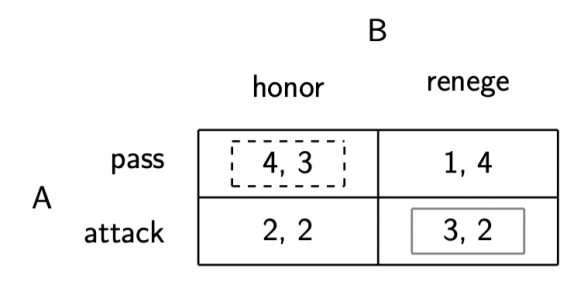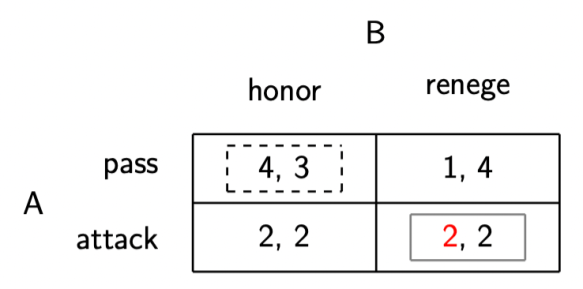Today’s lecture saw us focus pretty narrowly on a specific decision: Japan’s choice in December 1941 to attack the American naval base at Pearl Harbor (as well as numerous other foreign outposts throughout Southeast and Asia, including Hong Kong, the Philippines, Singapore, Malaya, etc.), bringing both the United States and the United Kingdom (the world’s two dominant naval powers) into what heretofore had been a local attempt to conquer China. Contrary to what the average American undergrad encounters on the way to this class, these other elements of Japan’s “Southern Advance” are key to understanding the rationale behind what has to be considered one of the boldest gambits of the Second World War. Yet at first blush they only seem to complicate the story; why, after all, did Japan launch a series of attacks far from its main theater of operations (China), that were virtually certain to create for it the problem of a two-front war when the main front was turning into a big enough problem on its own?
To understand Japan’s choice, we have to do two things. First, and here’s an underlying theme of the course again, we have to widen our view of the specific conflict we’re interested in, considering the ever-present interplay of great power politics. Second, we have to put ourselves as much as possible in the heads of the decision makers on both sides of this issue, which for us involves both the Japanese government and the United States—a new element in the region’s great power constellation. If we can pare the story down this way to isolate the essentials of Japan’s strategic context, we’re better poised to see that, given its predicament in 1941, Japan’s choice was not between the unmolested continuation of the war against China and a war with the United States, but between a series of bargains offered by the United States that would (in principle) both avert war and ensure Japan’s access to American oil, on which it was dependent for both domestic consumption and the working of its war machine. Japan was offered terms that looked a lot better than its ultimate outcome in the war, so why didn’t it take them?
Let’s frame the question even more starkly in terms of the inefficiency puzzle that’s been with us all semester. Looking back from 1945, Japan is defeated, occupied, economically troubled, and stripped of both its colonial possessions and great power status, yet throughout the late 1930s and into 1941, the country that would ultimately join the war and help force Japan’s surrender—the United States—offered it a variety of deals, some of which would ensure access to oil and the avoidance of war if only Japan would evacuate its post-1937 gains in China. That is, by most any standard, a better deal on its face than the realization of the near-certain defeat at the hands of the United States, China, and (eventually) the Soviet Union. Yet rather than accept such a proposal from the United States (backed up with a total oil embargo as negotiations continued to deteriorate), Japan chose to lurch outward from China, seizing the oil fields of Southeast Asia and securing a distant perimeter in the islands of the South Pacific in the face of what it knew was essentially inevitable American retaliation. Why?
Let’s start with the United States. Acting like a fairly normal great power in trying to limit the aggrandizement of other great powers (here, Japan), the US pursued this policy in a somewhat unique way: a grand strategy of ensuring both freedom of the seas (to facilitate global trade, like the British before them) and self-determination (i.e., the dismantling of other great power empires, something new and in the view of other great powers dangerously revolutionary). This nearly guaranteed a clash of interests over Japan’s war in China, aimed at closing off the later from the rest of the world trading system as an exclusive, autarkic market dominated by Japan, but it doesn’t explain why Japan and the United States came to blows in 1941, especially in light of what virtually all parties agreed was the foregone conclusion of an American victory in a protracted war. (Remember: disagreements are everywhere, but only some of them are resolved by war.) However, the combination of this great power rivalry and rapidly growing American naval power did prove sufficient to sour Japan on the possibility that any deal it struck in, say, 1941 with the United States would stick—that the American, and even Soviet and British, commitments to such a deal would be credible.
If we recall that Japan launched the war in China to preserve what it believed to be a great power position that would erode if it couldn’t ensure autarky, then we can see that a return to any kind of status quo ante that limited its position on the Asian mainland wouldn’t be credible; the Americans, for example, were building naval strength at a tremendous clip, approaching a multi-ocean blue water capability the world hadn’t yet seen, and once they reached sufficient capacity could not only muscle their way into the Pacific but also—critically—prevent the fall of China. The United States, rising rapidly in power, could hardly commit credibly to any deal that left Japan’s position on the Asian mainland intact. Put in starker terms, rising powers can’t promise not to act like great powers should they reach that status, their prior protestations—and commitments—to the contrary. The Americans could afford to build a massive fleet, and once built they could hardly afford not to use it. Paine is worth quoting here:
[P]eace on American terms, entailing a withdrawal from China, would lead to the gradual impoverishment of Japan and would undo the efforts of generations of Japanese to transform their country into a modern power. War with the United States, on the other hand, offered a 50-50 chance of success (p. 185)
In other words, cutting a deal would allow US power in the region to grow unchecked, and such increased power could be used, down the road, to force Japan out of China anyway. If the worst outcome of a war would be similar (and it was), then rolling the dice before military prospects got even worse—and Japan calculated that its chances of keeping the US out of the region long enough to consolidate its gains would peak at about 50-50 in December 1941—looked pretty attractive. Faced with a rising global power over the eastern horizon, one that would undoubtedly be able to enter the war and force Japan to yield its hard-won great power status (i.e., its potential imperial dominion in China), Japan rolled the dice and hoped to strike a decisive blow against American and British assets in the region, sending them reeling long enough to present them with a fait accompli. If the war could be kept short, and if the war in Europe would take a large part of American attention anyway, then a 50-50 shot at positioning itself to isolate China and win the war in its main theater was relatively attractive…
…but it was a gamble nonetheless, and one that failed to eliminate the American carrier fleet in Hawaii, which would go on to be the centerpiece of the campaign to approach and menace the Japanese Home Islands later in the war. We’ll talk about the end of this war, which will shatter the post-Qing regional order we’ve dealt with so far, on Thursday.


